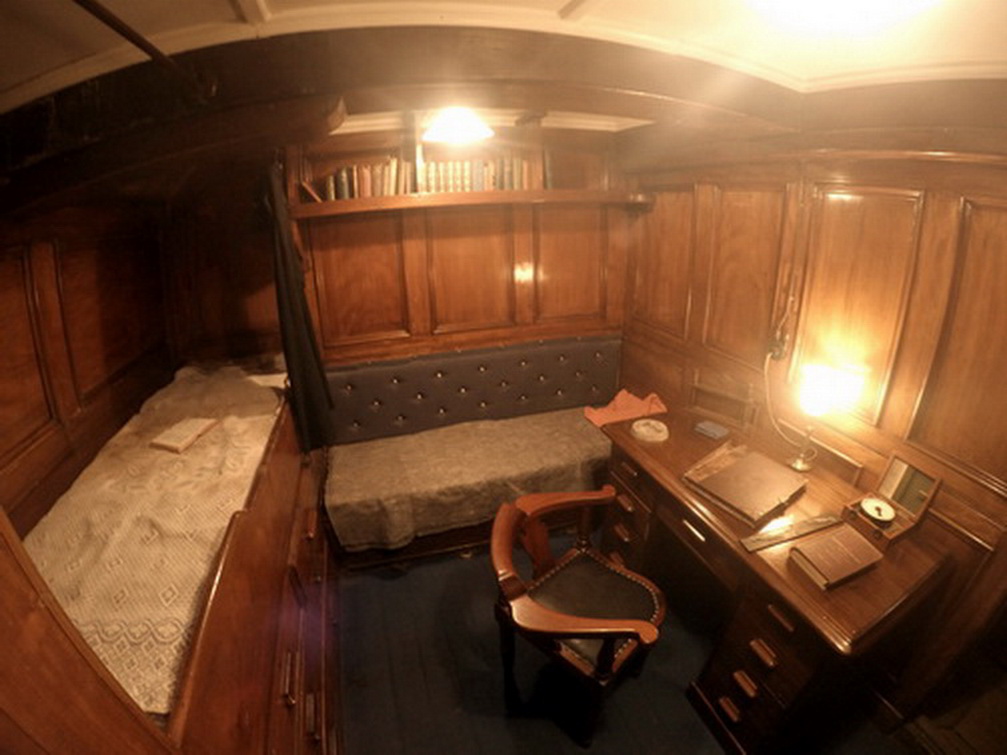All aboard the RSS Discovery!
Expedition warm up
On a very cold, blustery day in Dundee (Scotland) a small group of our Antarctica fieldtrip team arrived at the RSS Discovery Centre. Met by our guide Ali, we decided to start with a tour of the ship.

Unfortunately, due to conservation efforts the mainsails of the ship had been removed but despite this the Discovery still looked magnificent. Having said that, I think we all agreed that we were glad we’d be on a sturdier, more modern ship for our journey to Antarctica in March – no offence Dundee shipbuilders… we’re just not so keen on its 45⁰ pitch!

Using a fancy ipad and app developed by the University of St Andrews, we could see what the ship would have looked like in its full glory – mainsails and all. As we stepped on board we got a feeling of the incredible history that this ship possessed. We started on the top deck, looking at the ‘ankle breakers’, resembling mushrooms which acted as windows for the lower decks. They stopped water washing in and helped keep the structural integrity on the flanks of the ship strong instead of using porthole windows. Apparently, many of the crew had arguments about whether to open or close these windows – not because of the cold but because of the stuffiness of the cabins below! We may find ourselves in the same position in March – except this time with air-conditioning. How times change…

We then moved up to the helm of the ship where the main wheel was waiting for wannabe Jack Sparrows. We learnt about how Scott of the Antarctic almost met his end from a falling part of the rudder system before he even reached the Antarctic. Maybe a sign telling Scott he really wasn’t meant to go to the Antarctic(!)
We heard about all sorts of other stories that occurred during the long maritime history of the Discovery, including terrible drunken accidents in the crow’s nest, marauding pet penguins, grisly ends to one of the ship’s cats, and innovative engineering solutions. From lateral beams to stop the ship being crushed by ice when it overwintered, to slits in the inner hull that salt was poured into to preserve the wood, the crew owed a great deal to some very ingenious engineers for their safe passage. We also heard about the sluggish pace of the ship – a measly maximum speed of 8 knots. If we were sailing from Dundee to the West Antarctic Peninsula in March, it would take us 41 days to cover the ~15,000km journey – and that’s if we could sail constantly in a straight line! Thanks to aeroplanes and faster boats, we’ll be getting there in about 5 days. We also don’t have to cope with the ‘Dundee leak’ that affected the ship on its maiden voyage – although fingers crossed there won’t be an ‘Ushuaia leak’!

One of the highlights of the trip was entering the officer’s cabin area. With a luxurious mahogany finish, it was a remarkable sight – adorned with the familiar names of Antarctic explorers like Scott and Shackleton. It was incredible to set foot inside their cabins (some special behind the scenes access just for us) and think what it must have been like to be in their shoes. Well apparently, if you were Scott, it would have been very cold. Expedition leader Scott had the largest and coldest cabin and so stubbornly sat in his chair with a box of straw covering his boots to keep out the polar chills. We even found a cabin for one of our team, Sam Wilson – clearly his ‘ancestor’ Edward Wilson, a junior doctor and zoologist, was calling for him to return to the Antarctic…

After a good look around the rest of the ship and museum we finally said goodbye to Ali who was a fantastic guide and he wished us well for our journey. We’ll definitely be back to tell him and possibly some school groups about our experiences! Stay tuned for future posts on our expedition and hopefully some great swashbuckling tales from the Southern Ocean.
Text & photos by Alec Christie
